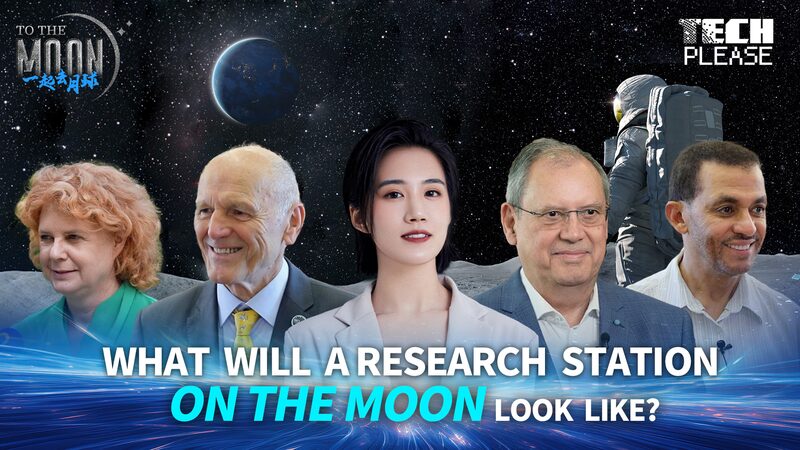Ever dreamed of setting foot on the moon? 🌕 Well, that dream might be closer than you think! China has just unveiled a detailed blueprint for the International Lunar Research Station (ILRS), and it's sparking excitement across the globe.
During an international conference on deep space exploration held in Tunxi District, Anhui Province, China shared its ambitious plans for the ILRS. The reveal has caught the attention of space agencies and organizations worldwide, and for good reason!
At the second International Deep Space Exploration Conference—a two-day space forum—China's space agency signed an agreement with Senegal to cooperate on the ILRS. But that's not all! China's Deep Space Exploration Lab also inked memoranda of understanding with 10 organizations from countries like Serbia, Switzerland, the United Arab Emirates, Indonesia, Pakistan, Panama, and South Africa. Talk about teamwork! 🤝
China first mapped out the ILRS initiative in 2017, aiming to establish a lunar research base that could support long-term human presence on the moon. And they aren't the only ones eyeing our lunar neighbor. Countries and organizations like India, Japan, Russia, South Korea, the UAE, the United States, and even private companies like Elon Musk's SpaceX and Jeff Bezos's Blue Origin have big lunar plans in the coming years.
Here's where it gets really cool: Chinese scientists recently discovered a new type of mineral in lunar samples brought back by the Chang'e-5 mission. This mineral contains water in its molecular structure! 💧 Scientists revealed that up to 76 kilograms of water could be extracted from just one tonne of lunar soil. NASA has also produced a map showing water molecules near the moon's south pole.
The discovery of water on the moon isn't just a fun fact—it's a game-changer! It makes the idea of humans living and working on the moon much more realistic. Nasr Al-Sahhaf, chair of the International Moon Day Group, said, \"We would like to build a laboratory so that we can extract this water and build something from it.\"
An international research station on the moon is something \"many people have waited a long time\" for, according to Sandra Hauplik-Meusburger, a professor at the Vienna University of Technology. She adds, \"It is also a stepping stone towards space, deep space exploration.\"
But let's be real—the moon isn't exactly a walk in the park. With no atmosphere and only one-sixth of Earth's gravity, it's a harsh environment. Establishing a lunar research lab involves overcoming extreme temperatures, frequent moonquakes, unpredictable micrometeorites, and cosmic radiation. 🌌
Zhang Zexu, a professor at the Harbin Institute of Technology, highlights the challenges: \"Reliable protection strategies must be formulated in response to its complex constraints. This should serve as the foundation for all work carried out.\"
Despite these hurdles, global experts and young visionary engineers are turning challenges into stepping stones. At a major event marking the third International Moon Day, innovators gathered to share solutions. The Moon Station 2050 Global Innovation Competition, for instance, featured projects addressing crucial aspects of building a lunar research lab, including transportation, energy utilization, architecture, robotics, and communication.
A team from Tsinghua University designed lightweight robots that can work as a team to explore lunar soil. \"A lot of them can drill inside the lunar soil to explore so that we can acquire comprehensive data about the insightful resources for aiding to construct the moon station,\" said team member Chan Nga Teng.
Lucas-Brian Christen, a research student at the University of Tokyo, proposed new thin-film solar cells that can be printed directly onto the lunar soil as a solution for energy utilization.
As Dumitru-Dorin Prunariu, president of the Space Explorer Association and Romania's first astronaut, put it, \"We have to think globally.\" 🌍 Giuseppe Reibaldi, president of the Moon Village Association, echoed this sentiment: \"These issues must unite all the countries in the world.\"
The moon is calling, and the world is answering. It's not just about one nation reaching for the stars, but about humanity taking a collective giant leap. Who knows? Maybe one day, we'll be scrolling through our feeds from a lunar base! 🚀
Reference(s):
To the moon: What will a research station on the moon look like?
cgtn.com




